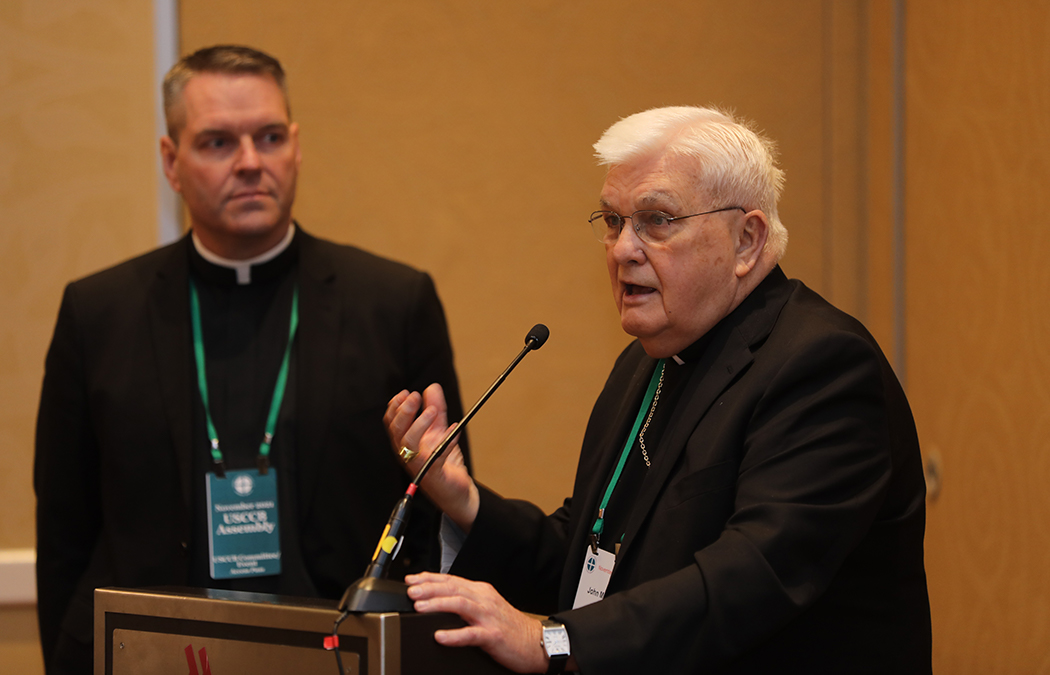Strong partnerships between universities and the local dioceses in which they reside can positively impact both higher education and help advance the work of the diocese. Saint Mary’s relationship with the Diocese of Winona-Rochester was highlighted at the 2021 Fall General Assembly of the United States Conference of Catholic Bishops (USCCB) earlier this month in Baltimore.
Based on the quality and strength of the partnership between Saint Mary’s University and the Diocese of Winona-Rochester, President Father James P. Burns, IVD, Ph.D., and Bishop John M. Quinn, AFSC, were paired to share some of the ways they work together to foster a positive relationship and enhance productive collaborations. The session, titled “Roles and Responsibilities of Bishops and Presidents,” was sponsored by the Higher Education Working Group of the United States Conference of Catholic Bishops. It was attended by dozens of bishops who have a university or college in their local diocese.
The two spoke of intentionality, collaboration, and communication. Bishop Quinn noted that trust is the key to a strong and affirmative relationship. He also gave examples of timely and consistent communication and proactively seeking points of collaboration. Among the many benefits of the partnership, Bishop Quinn said, “Saint Mary’s University is a great resource that strengthens the mission of the Diocese of Winona-Rochester. The university engages in collaborative ministry with local Catholic schools, health care, and lay ministry formation, which in turn helps to build up our parishes. It is a great blessing to have a Catholic university in our diocese.”
Father Burns reflected on how a college or university can be of service to the Church and how the educational mission can be expressed and enhanced by working together. He provided an example of how Saint Mary’s is impacting Catholic education through programming and scholarships directed to K-12 teachers and administrators. He also discussed the opportunity to work with clergy, religious, and laity to enhance the educational and religious experience of campus life and the ministerial efforts in the diocese. Father Burns said the session was met with positive energy. “Some attendees whom I spoke with following the sessions said the examples that Bishop Quinn and I referenced — as opportunities for collaboration and partnership — gave them hope for what could be possible in their home dioceses through invitation and intentionality.”
